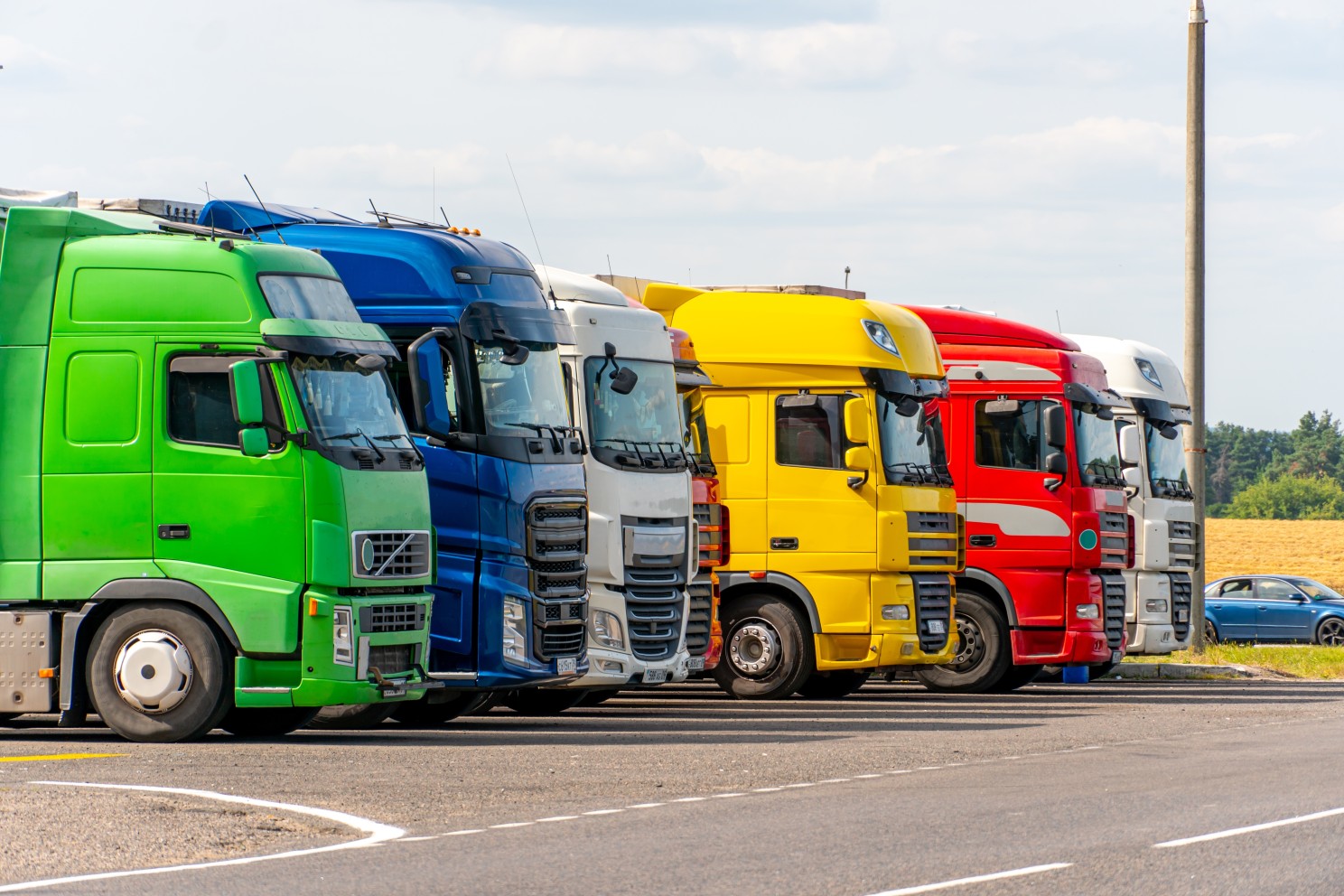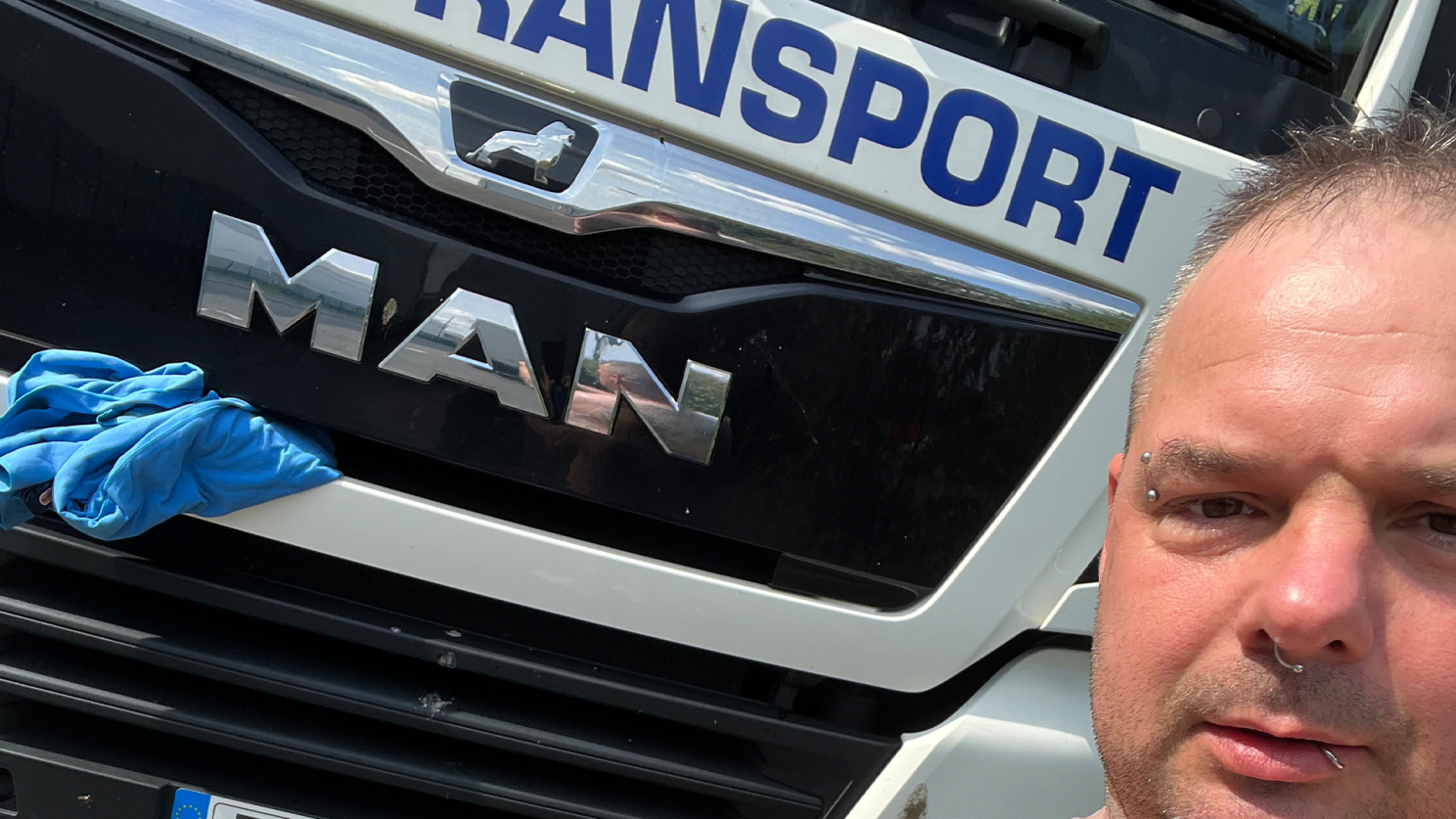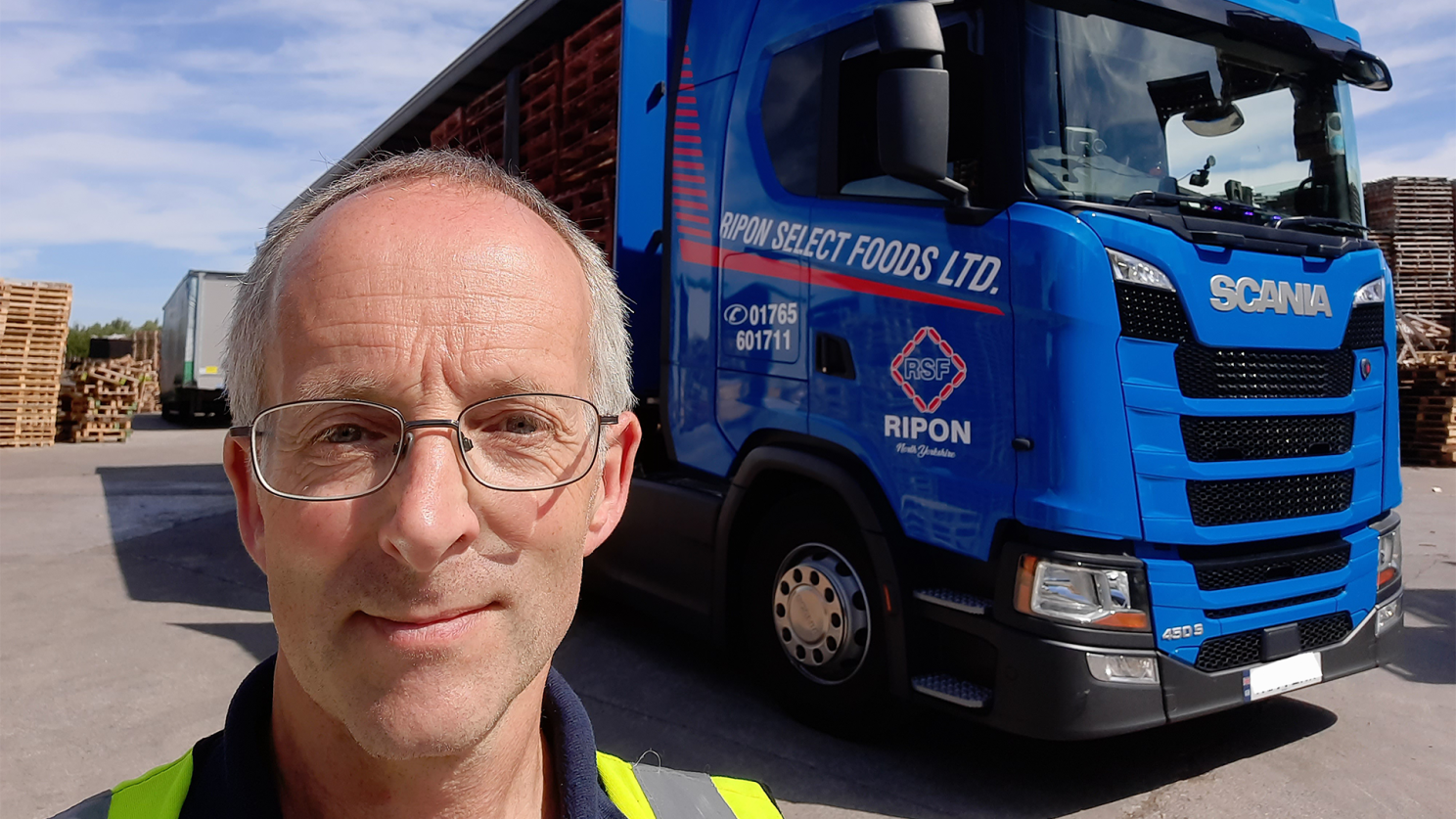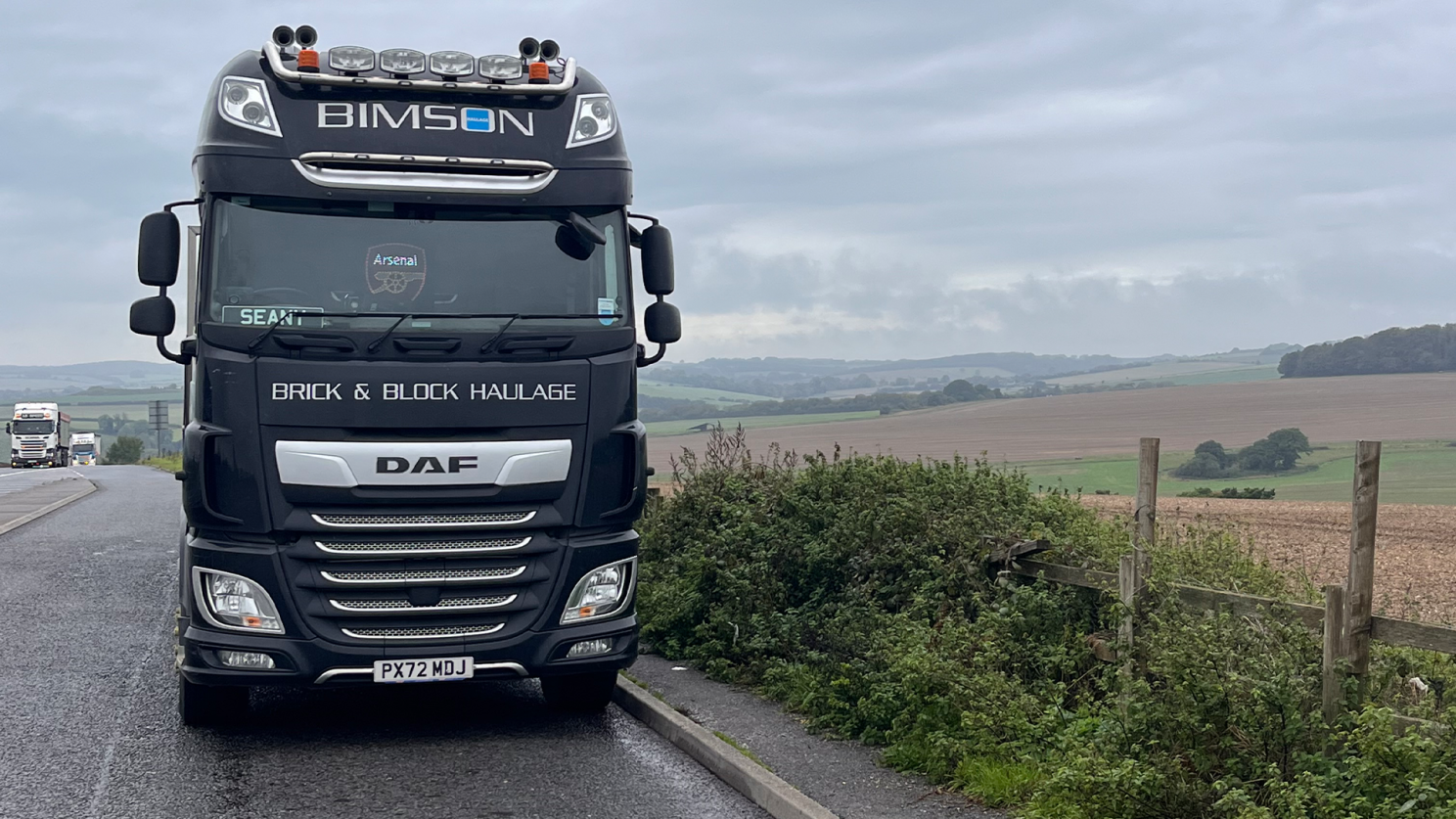
Susie Jones
Příběhy řidičů kamionů: příběhy z otevřených silnic
Vytvořeno: 22.08.2024
•
Aktualizováno: 22.08.2024
Chceme si posvítit na komunitu autodopravců a poznat lidi za volantem.
Od vrtulníků přistávajících před kamiony až po auta na špatné straně dálnice - zjistěte více o řidičích, kteří vám doručují zboží.
Alan
Alan řídí už 23 let a pro práci v oboru se rozhodl poté, co si poslechl písně Ally Thomsonové o řízení kamionu. Na otázku, co má na této práci nejraději, odpověděl, že je to "samota, kterou řízení kamionu přináší - je to naprosté odloučení od domácího života".
Jeho oblíbenými vozy jsou nákladní automobily Volvo, kterými cestuje po Velké Británii a převáží zboží společnosti Amazon. Říká, že přepravil spoustu zajímavých produktů: "Výběr je neomezený - stačí si vzpomenout na cokoli, co Amazon prodává."
Pro řidiče, kteří parkují přes noc, je obtížné se během prostoje zabavit. Zkušení řidiči, jako je Alan, však mají svůj večerní režim dokonale zvládnutý. Tvrdí, že "rád sleduje televizi Sky přes iPad", když na noc zaparkuje.

Pro řidiče, kteří se za volantem snaží zůstat zábavní, jsme připravili seznam způsobů, jak zabránit nudě.
Přestože dlouhé hodiny na cestách mohou mnohým připadat monotónní, Alan vysvětluje, že ho vždycky něco udrží ve střehu.
"Myslím, že nejbláznivější věc, kterou jsem při řízení viděl, byl vrtulník, který přistál přímo přede mnou," vysvětluje, že je na hony vzdálen monotónní pověsti, která tento obor provází už celá desetiletí.
Alan má za sebou 23 let v oboru a nabízí několik rad, díky kterým budou vaše zuby na cestách vypadat svěže.
Vysvětluje, že "rada, kterou bych dal každému nováčkovi v oboru, je, aby si vždy pamatoval, že má mít nabitý zubní kartáček."
Richard
Před 36 lety začal Richard svou kariéru v dopravě a nikdy se neohlédl zpět. Řízení ho chytlo, když se připojil ke svým dvěma starším bratrům a pomáhal rozvážet zboží po celé Velké Británii.
"Miluju, když dostanu náklad a vyrazím. Sám si určuji, kdy budu mít přestávku a kde zaparkuji. Být na cestách a cestovat po celé Velké Británii je skvělé," vysvětluje.
Během své kariéry ho život na cestách zavedl až do italského Milána, což je vyčerpávající cesta i pro ty nejzkušenější řidiče. Na otázku, jak se na svých cestách baví, odpovídá: "Rád poslouchám hudbu a sleduji filmy během volných chvil."

Nejlepší nákladní vůz, ve kterém to můžete udělat? "Musí to být Scania Next Generation 450S," říká.
Třicet let v oboru se pro Richarda neobešlo bez bláznivých historek a neobvyklých dodávek: "Viděl jsem auto, které jelo po dálnici v protisměru a sjíždělo z nájezdu. Nejzajímavější věc, kterou jsem měl na korbě náklaďáku, byl průvod svatého Viléma."
Přestože Richard stále miluje otevřenou silnici, tvrdí, že to někdy něco stojí. Nabízí skvělý vhled do reality této profese a rady pro ty, kteří se chtějí zapojit do tohoto odvětví.
"Dobře si rozmyslete, zda je to pro vás ta pravá kariéra. Počítejte s dlouhou pracovní dobou a s tím, že vám bude chybět spousta rodinného života."
Sean
Sean vyrůstal v rodině řidičů, a tak měl nákladní dopravu v krvi a před 20 lety usedl za volant a začal pracovat v dopravním průmyslu.
Tato práce přináší mnoho výhod, ale Sean na ní nejvíce miluje svobodu, kterou mu nabízí. Tato svoboda ho zavedla až do Skotska na šestitýdenní službu. Na těchto dlouhých cestách se baví telefonováním s přáteli a sledováním televize.

Zastávky pro kamiony navíc Seanovi pomohly v boji proti izolaci, kterou s sebou přináší řízení auta. Zastávky kamionů jsou často hájemstvím aktivit a umožňují Seanovi, aby se na svých cestách setkal s přáteli.
Tyto zastávky jsou ideální příležitostí vyslechnout si bláznivé historky od ostatních řidičů kamionů. Stejně jako Richard, i Sean na svých cestách viděl nejpodivnější věc, a to "auto jedoucí ve tmě po dálnici v protisměru", což je v komunitě řidičů kamionů až příliš častý příběh.
DAF XF 530 je Seanovo nákladní vozidlo, které si vybral pro přepravu stavebních materiálů po celé Velké Británii. Každému, kdo chce pracovat v autodopravě, radí: "Prostě do toho jděte!"
Dave
Dave jezdí s kamiony už 30 let a procestoval už Dánsko a Španělsko. Když zrovna nejezdí ve svém oblíbeném kamionu Volvo FH, rád se v pohodlí kabiny dívá na seriály.
"Chování některých řidičů aut mi přineslo několik bláznivých historek," vysvětluje. Když jsme se však Davea zeptali na nejzajímavější věc, kterou měl na korbě svého vozu, zůstal skoupý na slovo - "je to přísně tajné," prohlašuje.
Po 30 letech přepravy zboží se Dave naučil několik věcí o světě nákladní dopravy. Těm, kteří chtějí začít svou kariéru v oboru, dává skvělou radu: "Určitě se na něco specializujte."
Alastair
Alastair je v oboru relativně nový, rozhodl se pro kariéru řidiče kamionu, aby se po odchodu do důchodu zaměstnal. Po pěti letech, které má za sebou, si nejvíc ze všeho užívá rozmanitost této profese.
Během této doby mohl Alastair cestovat po Velké Británii a Evropě: "Navštívil jsem Inverness, Kodaň, Lisabon, Budapešť a Řím," uvádí.
Aby se Alastair nenudil, rád poslouchá "Radio 4, LBC a 5 Live".
Na svých cestách po Evropě byl svědkem neobvyklého chování ostatních účastníků silničního provozu. Blíže k domovu však musel manévrovat se svým kamionem při "demonstracích v Londýně". Byla to asi ta nejšílenější věc, kterou jsem zažil," vysvětluje.
Pro fanoušky agenta 007 se Alastair podělí o okamžik, kdy musel převážet přísně tajné předměty.
"Nejzajímavějším předmětem, který jsem měl na korbě kamionu, byly pravděpodobně výstavní předměty Jamese Bonda," prohlašuje.
Ačkoli Alastair nepůsobí v tomto oboru dlouho, má několik slov pro ty, kteří v něm začínají.
"Někomu, kdo uvažuje o tom, že by začal pracovat v dopravě, bych poradil, aby zůstal v klidu."
Sean V
Seanova láska k cestování má kořeny v mnoha letních prázdninách, které strávil s tátou na cestách v jeho kamionu. Po 30 letech řízení jeho láska k řízení stále sílí.
"Na této práci mě baví poznávat všechna krásná místa ve Velké Británii a Evropě," vysvětluje. Tato práce ho zavedla do různých destinací - nejdále cestoval do Říma.
Když Sean zrovna neprozkoumává města, rád se baví sledováním televize, používáním iPadu a donedávna i hraním her v pohodlí vlastního taxíku.

Nejšílenější věc, které byl na cestách svědkem?
Bohužel je Sean dalším svědkem pohledu, který je mezi řidiči kamionů až příliš častý - "auto jedoucí v protisměru na dálnici," vysvětluje.
Během své třicetileté kariéry Sean uvádí, že nejraději řídil nákladní vozy DAF a že nejzajímavějším předmětem, který přepravoval, bylo "specializované lékařské vybavení".
Seanova láska k oboru převažuje nad některými negativními aspekty práce. Těm, kteří chtějí nastartovat svou kariéru v dopravě, však může nabídnout tato moudrá slova:
"Pokud se chystáte nastoupit do tohoto oboru, počítejte s dlouhou pracovní dobou."
Zaregistrujte se u SNAP ještě dnes
SNAP vám usnadní život tím, že vás napojí na naši rozsáhlou síť služeb silniční dopravy. Zaregistrujte se ještě dnes.



